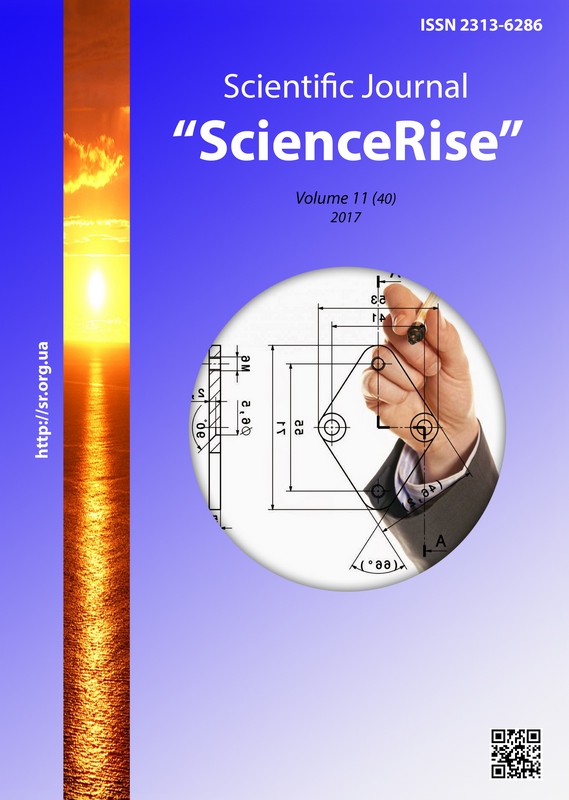General principles of steel structures risk operation estimation and assessment of their residual life
DOI:
https://doi.org/10.15587/2313-8416.2017.116444Keywords:
steel structures, defect, damage, residual life, technical conditions, risk, safetyAbstract
The research of the problems of operation of complex engineering systems, buildings and structures made of steel structures is carried out. Estimation and forecasting of the residual life, analysis of the risks of further exploitation of steel structures that were damaged during operation are proposed. It is suggested to take into account the development over time of the identified and carry out the accounting of defects and damage to steel structures not identified during the technical inspection. The developed algorithm for calculating the residual life of steel structures using probabilistic or deterministic methods is proposed
References
On Approval of the State Scientific and Technical Program "Resource" (2004). Verkhovna Rada of Ukraine, No. 1331.
Shimanovsky, O. V., Korolyov, V. P. (2008). Conceptual bases for system of technical re-sounding reliability and safety of building structures and engineering. Industrial Construction and Engineering Facilities, 1, 3–9.
Orinyak, I., Borody, M., Batura, A., Aneev, S. (2009). Methods of conducting risk analysis of trunk pipelines in order to declare their safety and extend their service life. Problems of resource and safety of the exploitation of structures, structures and machines, 22–28.
DSTU 2156-93.Safety of industrial enterprises. Terms and definitions (1995). Derzhavnyi Standart Ukrainy.
DSTU-P OHSAS 18001:2006. Occupational safety and health management systems (2006). Derzhavnyi Standart Ukrainy.
Renn, O. (1999). Three decades of risk researches: achievements, new horizons. Voprosy analiza riska, 1 (1), 80–100.
Bulgakov, S., Tamrazyan, A., Rahman, I., Stepanov, A. (2004). Reduction of risks in construction in emergency situations of natural and man-made nature. Moscow: MAKS press, 304.
Reliability of technology. Methods for calculating reliability indicators. General requirements. ДСТУ 2862-94.
The methodology for determining risks and their acceptable levels for declaring the safety of high-risk facilities (2002). Ministry of Labor and Social Policy, No. 637.
DSTU B V.2.6-210:2016. Estimation of the technical state of the steel structures under exploitation (2016). Derzhavnyi Standart Ukrainy.
Pandey, M. D. (1998). Probabilistic models for condition assessment of oil and gas pipelines. NDT & E International, 31 (5), 349–358. doi: 10.1016/s0963-8695(98)00003-6
Yuan, X.-X., Pandey, M. D., Bickel, G. A. (2008). A probabilistic model of wall thinning in CANDU feeders due to flow-accelerated corrosion. Nuclear Engineering and Design, 238 (1), 16–24. doi: 10.1016/j.nucengdes.2007.06.004
Korolyov, V. (1995). Theoretical basis of engineering calculations of steel structures for corrosion resistance and durability. Nauchnye trudy, 1-95, 24.
Downloads
Published
Issue
Section
License
Copyright (c) 2017 Sergiy Kolesnichenko, Yuriy Selyutin, Inna Chernykh, Kamo Mnatsakanian

This work is licensed under a Creative Commons Attribution 4.0 International License.
Our journal abides by the Creative Commons CC BY copyright rights and permissions for open access journals.
Authors, who are published in this journal, agree to the following conditions:
1. The authors reserve the right to authorship of the work and pass the first publication right of this work to the journal under the terms of a Creative Commons CC BY, which allows others to freely distribute the published research with the obligatory reference to the authors of the original work and the first publication of the work in this journal.
2. The authors have the right to conclude separate supplement agreements that relate to non-exclusive work distribution in the form in which it has been published by the journal (for example, to upload the work to the online storage of the journal or publish it as part of a monograph), provided that the reference to the first publication of the work in this journal is included.

